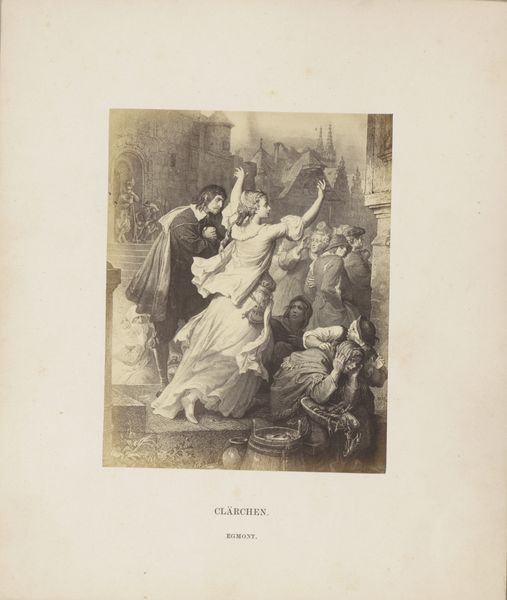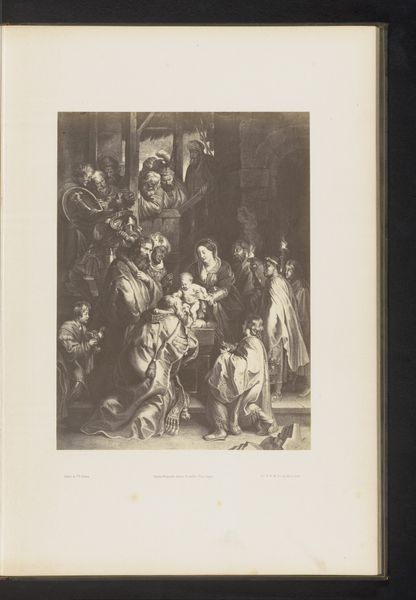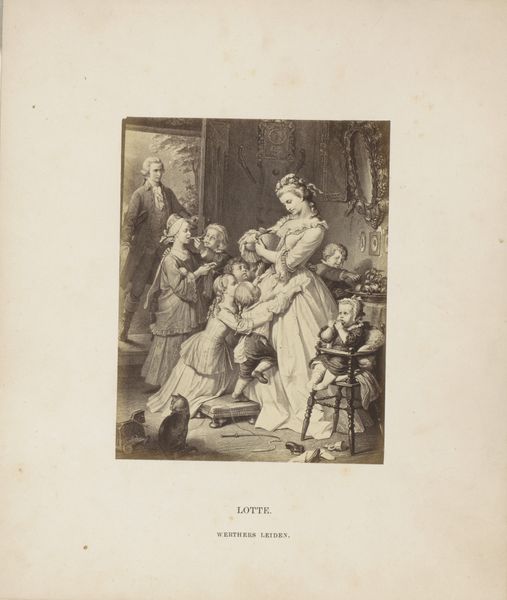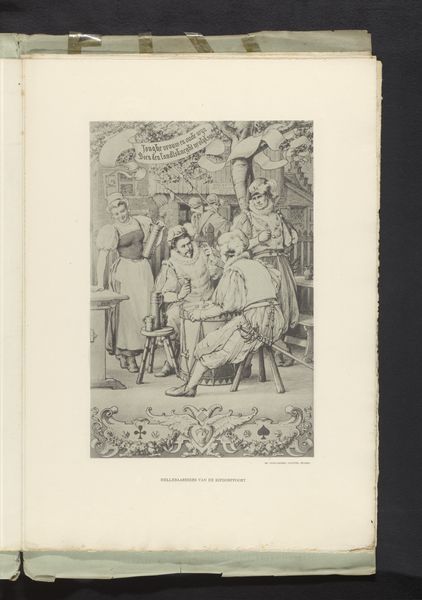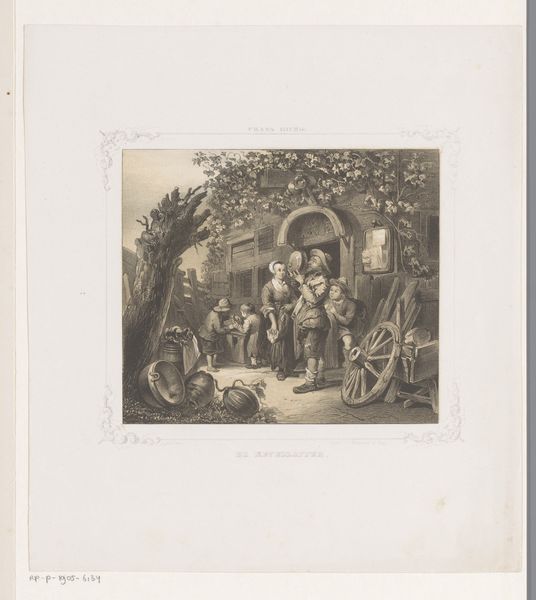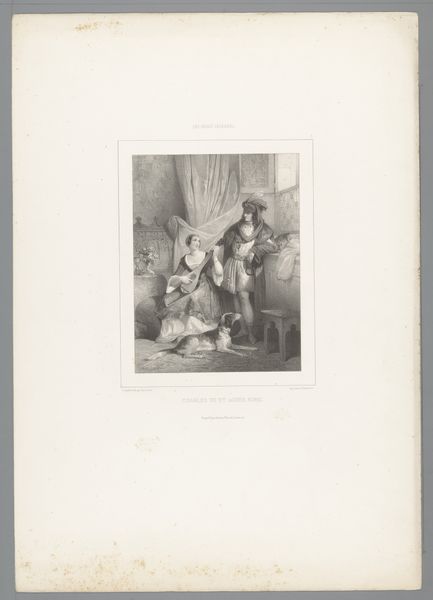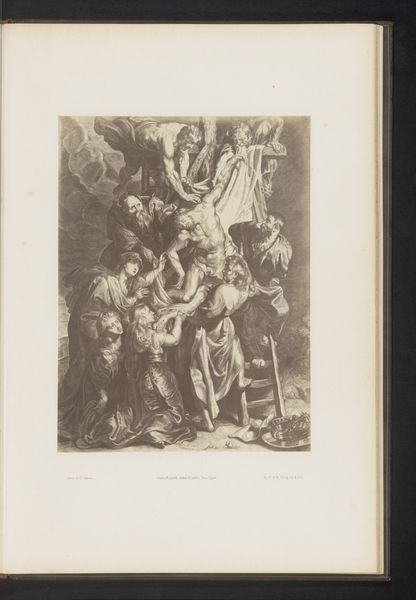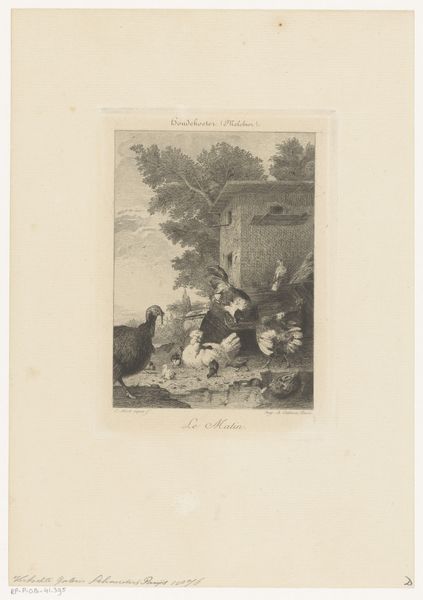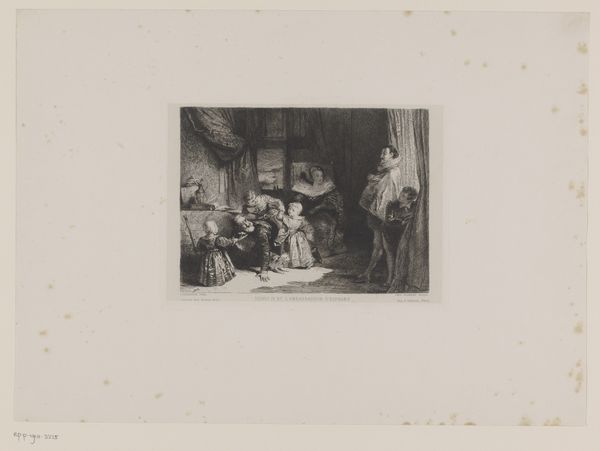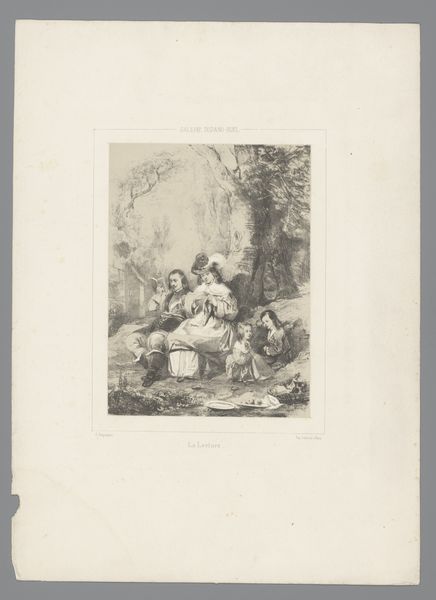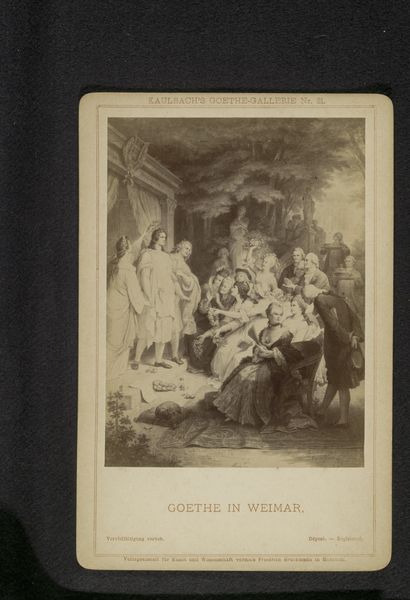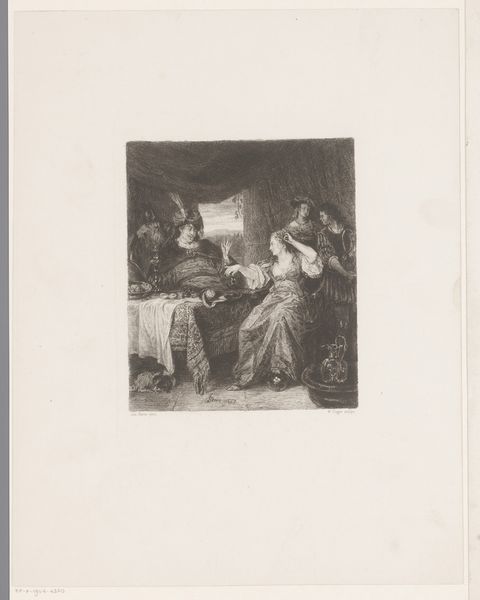
Fotoreproductie van een tekening van een opvoering van Johann Wolfgang von Goethe's Iphigenia auf Tauris met Goethe als Orestes door Wilhelm von Kaulbach 1850 - 1900
0:00
0:00
anonymous
Rijksmuseum
Dimensions: height 211 mm, width 178 mm, height 119 mm, width 93 mm
Copyright: Rijks Museum: Open Domain
This photograph reproduces a drawing by Wilhelm von Kaulbach, depicting a performance of Johann Wolfgang von Goethe’s play "Iphigenia in Tauris," with Goethe himself as Orestes. Though the date is unknown, the original drawing likely comes from the mid-19th century. The image encapsulates the cultural veneration of Goethe in Germany. Here, he is both playwright and actor, embodying the classical ideals of the Weimar Classicism movement, a cultural period encouraging the imitation of Greek and Roman art, of which he was a key figure. The drawing suggests the social conditions that shaped artistic production at the time. The presence of a seated audience of well-dressed individuals implies a cultured elite who are closely engaged with the arts and intellectual pursuits. Note how the location - Weimar - was an important center for artistic and intellectual life, as well as the capital of the Duchy of Saxe-Weimar, where Goethe held an official position. To understand this image further, one might research the history of Weimar Classicism, the social dynamics of 19th-century German theater, and the role of cultural figures like Goethe in shaping national identity.
Comments
No comments
Be the first to comment and join the conversation on the ultimate creative platform.
